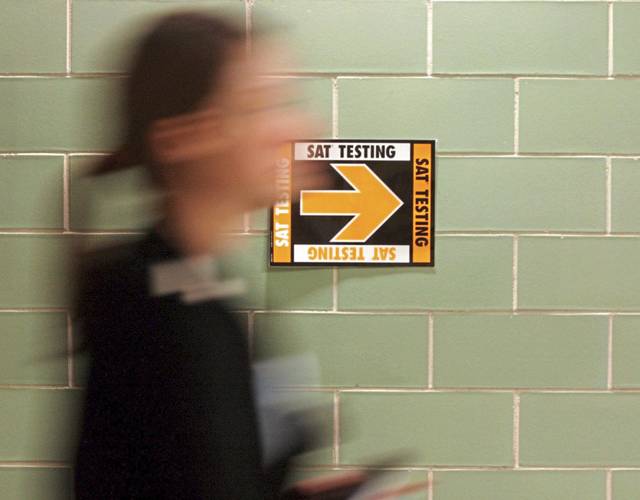See how Pennsylvania students fared on SATs in 2019
The Pennsylvania Department of Education has released the average SAT scores at public schools across the state.
The averages come from students in the class of 2019 who took the standardized test — about 2.2 million students nationwide, according to College Board, the institution that administers the test.
The exam is often used as a tool for college admissions, and the tests are made up of three sections: a math section and reading section are both scored on scales of 200-800. An essay portion is scored separately on a scale of 2-8.
Total scores range from 400-1600.
Across Pennsylvania, the average score for public schools was 1041. The report does not include private or religious schools.
The average composite score for public school in Allegheny County was 1046; in Westmoreland, it was 1079. The average for each school is dependent upon the number of students who took the test, meaning that schools with fewer students could see scores skewed one way or another.
Upper St. Clair topped the list in Western Pennsylvania and ranked ninth in the state with an average composite score of 1238.9. North Allegheny Senior High School ranked No. 10 at 1235.9.
Franklin Regional was the highest-ranked Westmoreland County school (47th) with an average composite score of 1166. Eleven schools from within the WPIAL ranked in the top 50.
The standardized tests have long come under criticism, including the recent “Varsity Blues” scandal that saw wealthy parents bribing test administrators, through a middle-man, to change test scores or let students cheat.
Most recently, the College Board in August backed off of a plan to add an “adversity score” to the test, according to the New York Times. The score was a number between 1 and 100 that critics said reduced an applicant’s background — like school and neighborhood environments — to a single number.
The adversity score was set to be part of a larger data set provided to college admissions. Some of that data will still be available to colleges — and students — but it will not be a single number.
At the same time, more schools are forgoing the test requirements for admissions. PBS reported in October that one in four institutions no longer require SATs or ACTs for admissions.
The University of Chicago reported an increase in first-generation and lower-income students for the 2019-20 school year after making the tests optional for admissions, according to Inside Higher Ed. That, combined with a number of other initiatives at the school, increased the number of first-generation and low-income students by 20%.
Remove the ads from your TribLIVE reading experience but still support the journalists who create the content with TribLIVE Ad-Free.

